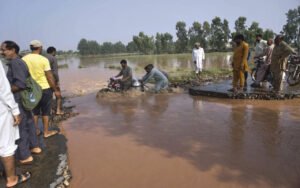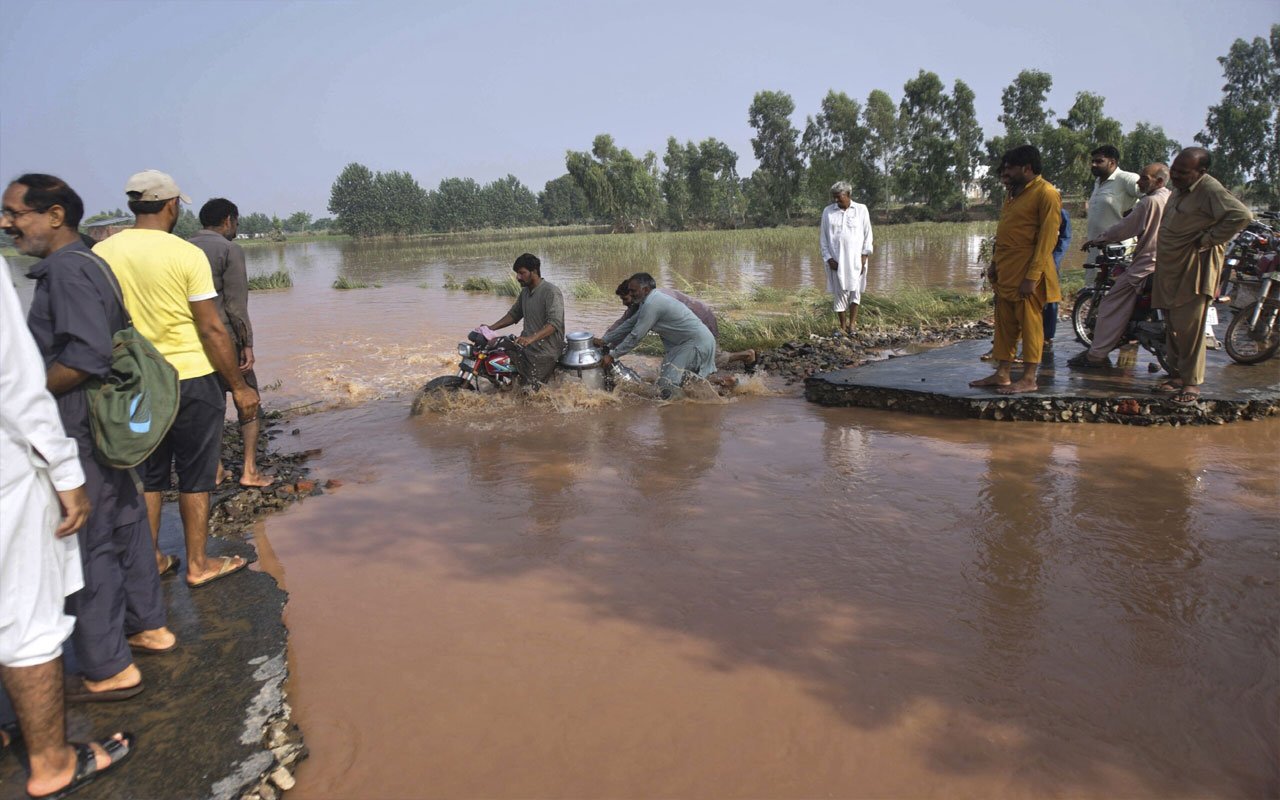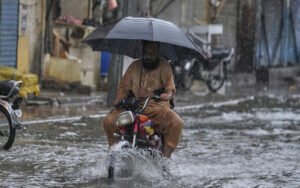Pakistan deadly floods 2025 Over 2 Million Evacuated as Deadly Floods Ravage Pakistan’s Punjab and Sindh
Pakistan deadly floods 2025 Mass Evacuations Amid Rising Waters
Authorities in Pakistan’s Punjab province have evacuated more than two million people as monsoon floods devastate the region. In Sindh, another 150,000 residents have been displaced, according to National Disaster Management Authority (NDMA) chief Inam Haider Malik. Officials warned that the number could rise as floodwaters continue to spread across the eastern provinces.
Rising Death Toll Across the Country
Since late June, more than 900 people have lost their lives due to floods nationwide, according to the International Medical Corps. Many victims were swept away as rivers overflowed, while others died in boat accidents during evacuation efforts. In one tragic incident, nine people were killed when a rescue boat capsized in the Indus River.
Climate Change and Poor Infrastructure to Blame
Experts and critics alike point to climate change as a major driver of Pakistan’s worsening flood disasters. Melting glaciers, extreme rainfall, and poorly maintained infrastructure have combined to create a climate emergency. Officials admit that better early warning systems and flood defenses could have reduced the scale of destruction.
 Humanitarian Crisis in Flood-Affected Regions
Humanitarian Crisis in Flood-Affected Regions
The floods have submerged farms, destroyed homes, and displaced millions, hitting hard in a country where 40% of the population already lives below the poverty line. Families have been reluctant to leave their homes and belongings, forcing rescuers to use small boats to relocate them — a dangerous task in fast-moving waters. Relief agencies have delivered tents, blankets, and water purification supplies, but the need continues to grow.
International Aid and Government Response
The United Nations has allocated $5 million in emergency relief, while the United States has also pledged financial aid and deployed disaster response teams. Prime Minister Shehbaz Sharif has declared a climate emergency and ordered the government to prepare a 300-day plan to tackle climate-related challenges. Experts warn that recovery and rehabilitation work across thousands of villages may take weeks, if not months.
Pakistan’s Flood Vulnerability
Pakistan’s geography makes it one of the most vulnerable countries in the world to climate change. In 2022, catastrophic floods killed more than 1,700 people and displaced 30 million, marking one of the deadliest disasters in the nation’s history. The latest floods serve as yet another reminder of the urgent need for climate resilience measures.
The Scale of Evacuations in Punjab and Sindh
Authorities have confirmed that more than two million people have been forced to leave their homes in Punjab province, while 150,000 residents were evacuated in Sindh. Officials warn that numbers may rise as heavy rains continue to cause river overflows.
Rising Death Toll and Widespread Destruction
According to the International Medical Corps, over 900 people have lost their lives since late June. The floods have destroyed villages, homes, and farms, pushing thousands into poverty and displacement. Rescue missions remain ongoing despite strong currents and dangerous conditions.
Agricultural and Economic Impact
Punjab and Sindh, Pakistan’s major agricultural hubs, are among the worst-hit. Crops such as wheat, rice, and sugarcane have been destroyed, sparking fears of food shortages and rising inflation across the country.
Health Risks and Humanitarian Concerns
Floodwaters have increased the risk of waterborne diseases such as cholera, malaria, and dengue. Aid organizations warn of a looming health crisis if immediate support, clean water, and medical facilities are not delivered to flood victims.
Education and Social Disruption
Schools across flood-hit areas have been closed, with many converted into shelters for displaced families. Thousands of children face uncertainty regarding their education, adding to Pakistan’s ongoing literacy challenges.
Government and International Response
Pakistan’s National Disaster Management Authority has distributed tents, blankets, and water filters to affected areas. The United Nations has allocated $5 million, while the US and other countries pledged humanitarian aid to support recovery efforts.
Climate Change and Pakistan’s Vulnerability
Experts highlight that Pakistan’s geography, melting glaciers, and poor infrastructure make it one of the most climate-vulnerable countries. Without long-term adaptation policies, future floods are likely to cause even greater devastation.
Calls for Policy Reform and Global Cooperation
Environmentalists urge Pakistan’s government to invest in early warning systems, reforestation, and flood-resilient housing. Global cooperation and sustained international support are essential to help Pakistan build climate resilience.
Internal Link Suggestion:
Read more about Climate Change Challenges in Pakistan
External Link Suggestion:
Learn more from the United Nations Climate Reports









